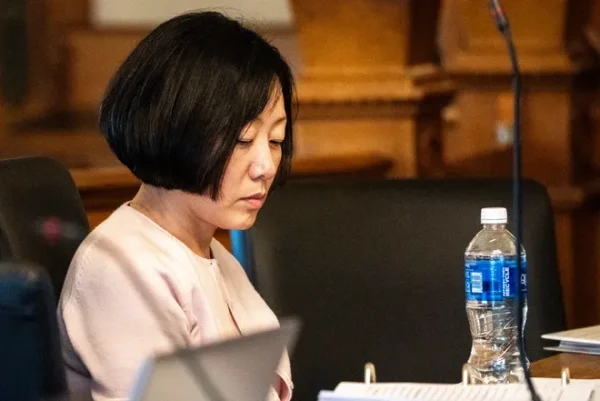Students qualify for tax credits
February 18, 2009
Following the record-breaking floods that affected most of the state of Iowa last summer, the Internal Revenue Service is offering some relief to victims during this year’s tax season.
In a measure targeted primarily at college students, the IRS has adjusted its definition of qualified education expenses in the hopes of providing less of a financial burden for those affected by the floods.
Students who qualify could receive a credit of up to $4,000.
The program is coordinated through the Iowa College Student Aid Commission.
“Typically, and in the past, they’ve been tuition only,” Assistant Controller Cathy Hoch said. “This year, because of the floods and because Simpson is in a Midwestern disaster area, it has been expanded to include books, supplies and equipment required for enrollment, and room and board. For commuter students, it would include a room and board allowance.”
Most of the state of Iowa was declared a disaster area last May, according to a press release from the Federal Emergency Management Agency.
The press release states that “assistance can include grants for temporary housing and home repairs, low-cost loans to cover uninsured property losses and other programs to help individuals and business owners recover from the effects of the disaster.”
Although FEMA regularly assists those who have been affected by disasters, Hoch said that it’s rare for the IRS to get involved.
“I’ve never seen this in Iowa before,” Hoch said. “Something similar was done in areas affected by Hurricane Katrina.”
Hoch said that everybody at Simpson College would qualify for assistance because of its location. The county was one of many in the state of Iowa that were declared disaster areas last spring by then-President George W. Bush.
“They’re qualifying for the additional relief if their college was located in a disaster area,” Hoch said. “There are different types of credits – one is the Hope Credit, the other is the Lifetime Learning Credit. An eligible student is the same definition for both credits, but the credit they take depends on their grade level.”
Hoch said the Hope Credit is used by students in their first two years of college, and the Lifetime Learning Credit is used for those in their last two years.
Hoch also said that she agrees with the IRS’s decision to assist financially.
“Obviously, if most of the state is still recovering from the flood, many families are facing a financial burden from that,” she said. “I think they’re trying to reward students who are willing to continue to attend a school that may have been affected by the flood.”
Simpson students also feel the IRS is making the right decision.
“It makes sense, given what they’ve already been through,” sophomore Crystal Fisher said. “They’ve been hit hard enough.”
Freshman Alec Medeiros agreed with Fisher.
“It sounds like a pretty good system to help those affected by adverse weather,” Medeiros said. “It probably took a lot of money to get people back to where they were.”
Hoch said that she wants students to talk this issue over with their families.
“I did send out an e-mail to students and I would encourage students to forward that on to their parents or their tax preparers so that everyone is able to get the benefit that is rightfully theirs.”
Hoch also offered her assistance to students.
“If people have questions, they can contact me,” Hoch said. “I can’t give tax advice, but I can help discern basic questions.”
According to a statement on the IRS’s Web site, around three quarters of the counties in the state of Iowa was declared a disaster area. Out of Iowa’s 99 counties, only 25 were not declared disaster areas.
In addition to the Hope and Lifetime Learning Credits, students may also qualify tuition and fees deductions and student loan interest deductions.
Additional information is available from the National Association of Student Financial Aid Administrators at www.nasfaa.org.












